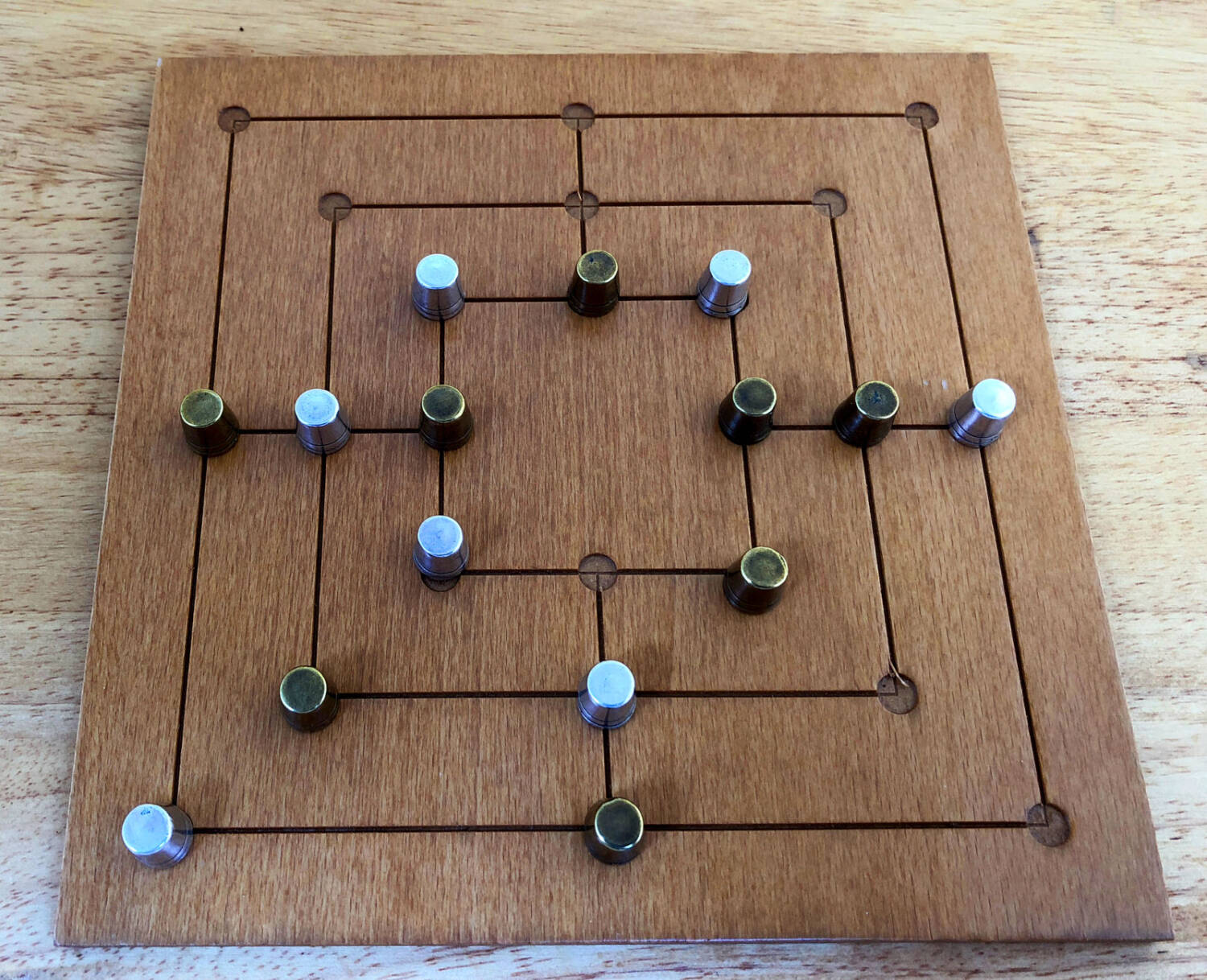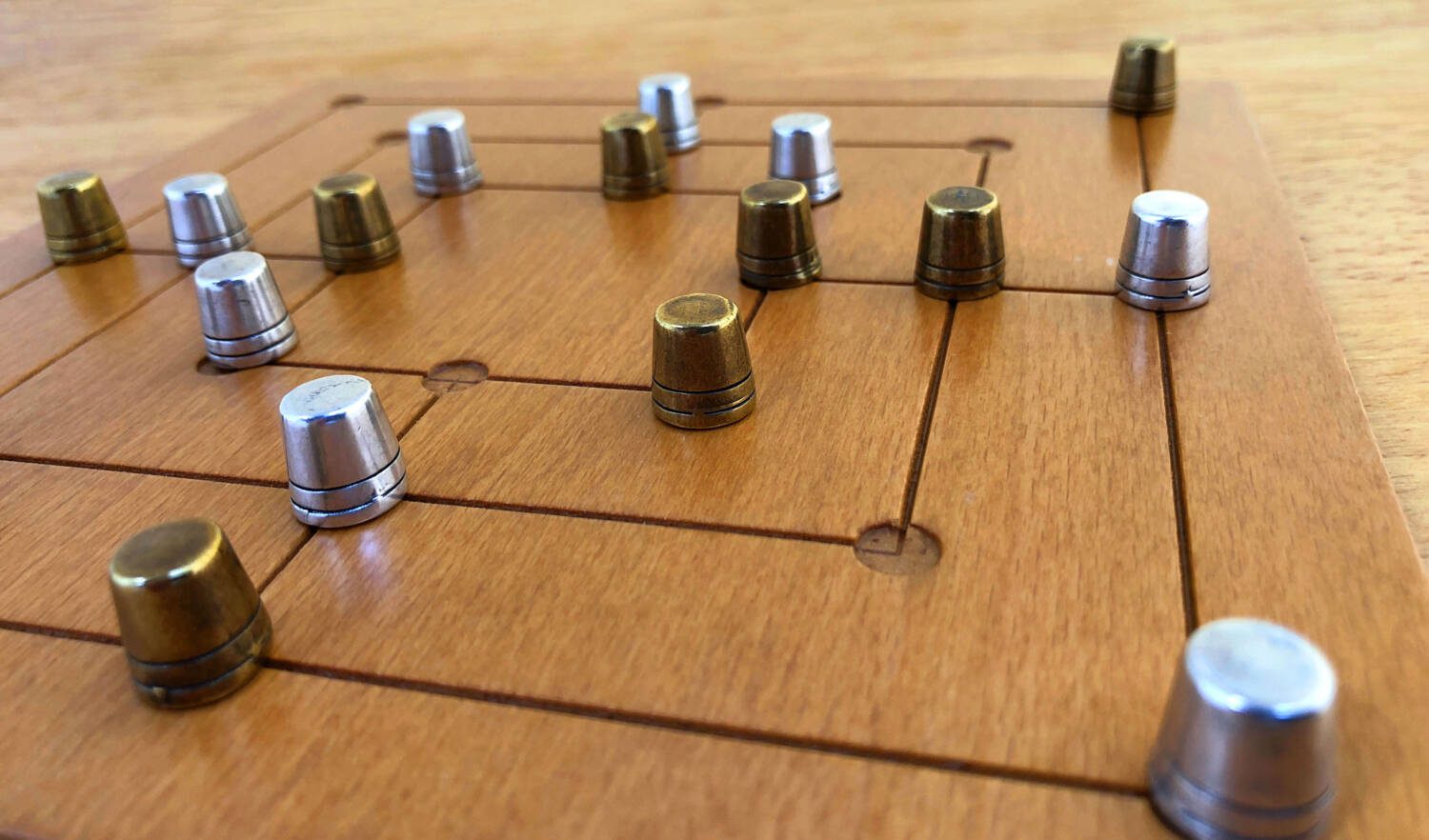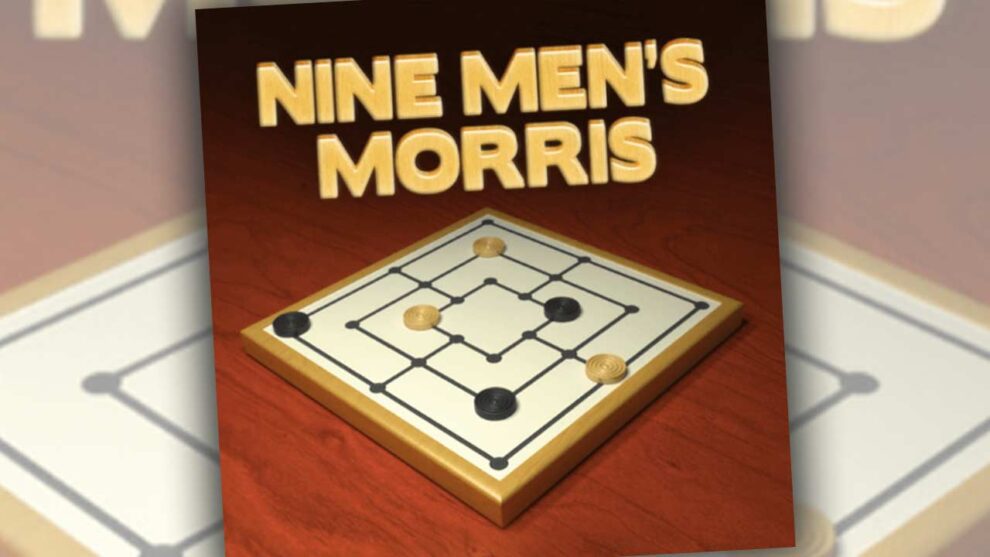The game we know as Nine Men’s Morris was played as far back as the days of the Roman Empire and is known by many names. The distinctive board has been found etched into ancient roof tiles and still exists in a temple from the 9th-10th Century AD in Karnataka, India.
I grew up calling it Mill, while other people in other countries know it as Merrills, Merels, Ninepenny Marl, and The Game of Nines. Regardless of the name, the goal remains the same: to reduce your opponent from their starting nine pieces down to two. You do this by arranging three of your pieces in a single, connected row of three pieces known as a Mill. This allows you to remove any of your opponent’s pieces from the board, provided that piece is not part of a Mill itself. (You may never remove a piece from an existing Mill.)
The board consists of three squares: a small square centered inside a medium square that is surrounded by a larger, outer square. Each square is connected to the square(s) next to it by a line that cuts perpendicularly through the center of each side. Circles are used to indicate these intersections and additional circles are added to the intersections at the corners of each square. Thus, the board contains three squares and 24 circles.

We play the modern game in three phases. In the first, players alternate turns by placing a single piece of their color on one of the marked circles. If, during this phase, a player creates a Mill, that player removes one of their opponent’s available pieces.
During the second phase players move their pieces along the straight lines to an open circle. Moving into a Mill allows you to, again, remove an opponent’s piece that is not currently in a Mill.
Moving into a Mill on one turn, sliding out of it on your next turn, and then back into the same Mill on the following turn is allowed. And can be devastating to an opponent.
The third phase (which appears to be a later addition to the historical game) allows a player reduced to three pieces to no longer be restricted to sliding from point to point on the board. Instead, that player may pick up a piece and ‘fly’ from one intersection to any other unoccupied intersection on the board. This gives the losing player a fighting chance during the endgame.
The Killer Strategy involves lining up a series of pieces on the board that allow you to slide a single piece from one Mill to another space that creates another Mill. Moving back and forth from one Mill to another creates an all-but unstoppable winning set of moves.
I have genuinely fond memories playing Nine Men’s Morris with my father on Friday nights. The game was simple enough for me to grasp the first time we played, but complex enough to command my youthful attention. I know my father was generous with his moves in those first games, but later games continued to be challenging enough for me to pull out the board and ask to play every few weeks.

With the beautiful version of The Game of Nines provided by the Greek Culture Society, (now, sadly, closed down) I revisited the game. As an adult I initially found the game to be either too simple or too difficult. The difference was not only in the experience of the person I was playing, but the attention I was giving the game.
Initially, I wondered if Nine Men’s Morris was an artifact of a much older time, a game that other, more complex and more challenging games had long since replaced. The more I played it, however, the more I developed an appreciation for the all-but ruthless nature of the game.
Nine Men’s Morris is a brutal game, one that requires perfect play from each player. One mistake can easily cost you the game. But, since each game typically only lasts a few minutes, that chance of redemption is just moments away.
An unforgiving game like Nine Men’s Morris is a Gamer’s Game. It’s one that demands your full attention and your best play. If you’re up to such a challenge, I recommend you look into it.












I played this game as a kid. Spent a lot of time with people much older than me kicking my butt and laughing at me afterwards. So my memories are not as beautiful as the ones with your father. I may give this one another chance.
Games like this are a part of an older time — and that is good, that link we have to history. I am so glad you have fond memories of this game and have had a chance to revisit them. Thanks for a beautiful review and a tale of familial bonding.
Can’t wait to read some more of your reviews.
Thanks for the kind words, sir. I was very fortunate to have a father who would play games with me on occasion.
I’m currently working on a set of reviews for the entire Project GIPF series of games. They should be published here either at the end of this year or early next year.
— Tom